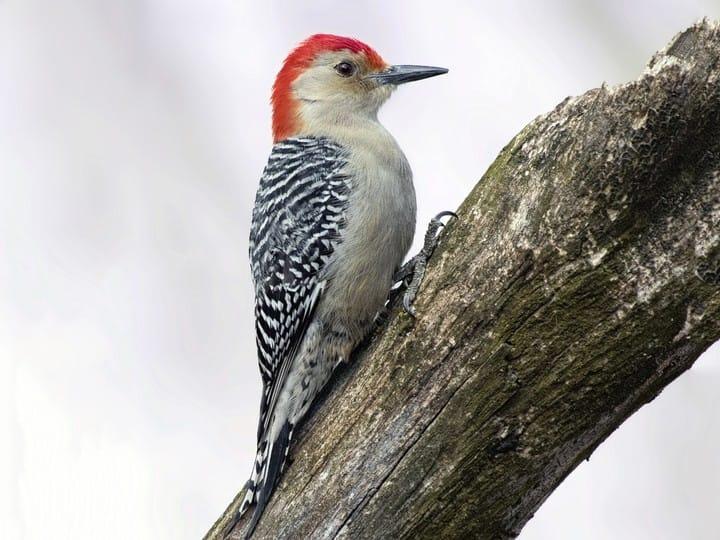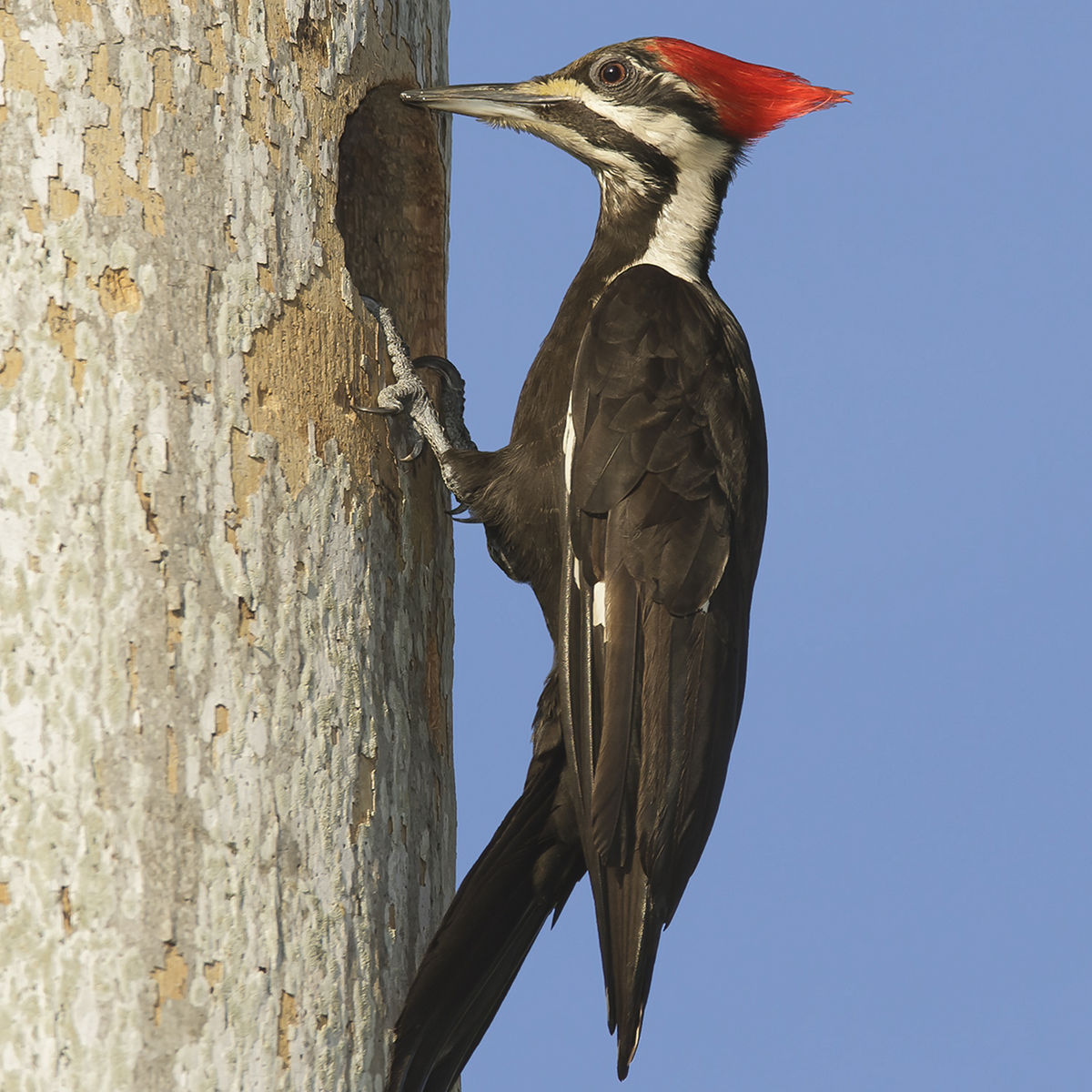Woodpeckers Unleashed: Discovering the Wonders of These Proficient Tree Climbers
Woodpeckers, with their distinctive markings and balanced drumming echoing through wooded areas, hold a distinct location in the bird world. Their specialized composition and adjustments allow them to navigate upright surface areas with exceptional skill. However, their mastery of tree climbing is simply one element of their interesting behavior. As we look into the elaborate information of woodpeckers' nesting routines, feeding methods, and the continuous preservation efforts to secure these remarkable birds, a much deeper gratitude for their area in nature unravels.
Anatomy and Adaptations
When checking out the makeup and adaptations of woodpeckers, one can observe amazing features that allow these birds to prosper in their specialized ecological particular niche. Woodpeckers are equipped with a suite of one-of-a-kind physiological qualities that help them in their woodpecking behavior. Among the most famous attributes is their strong, chisel-like beak, which is specialized for boring into wood to reveal bugs or produce nesting tooth cavities. This beak is sustained by strong neck muscle mass and a very developed skull framework that works as a shock absorber, allowing woodpeckers to continuously eat trees without triggering brain injury. Additionally, woodpeckers have zygodactyl feet, with 2 toes encountering ahead and 2 facing backward, supplying a company hold on tree trunks while they look for food or drum for interaction.
Furthermore, woodpeckers have a special tongue structure that is long, barbed, and sticky, allowing them to draw out pests from gaps in timber. This specific adaptation enables woodpeckers to manipulate a food resource that is hard to reach to lots of various other bird types. On the whole, the makeup and adaptations of woodpeckers display the impressive evolutionary solutions that have actually enabled these birds to flourish in their arboreal environment.
Drumming Habits
Having explored the composition and adjustments of woodpeckers, the focus now moves to comprehending their drumming behavior, a distinctive element of their communication and territorial display screens. Drumming is an essential kind of communication amongst woodpeckers, offering multiple purposes such as establishing areas, drawing in friends, and signaling alarm. Each woodpecker varieties has an one-of-a-kind drumming pattern that assists individuals acknowledge members of their own species and differentiate them from rivals or predators.
Woodpeckers generate drumming noises by swiftly pecking on powerful surfaces such as dead trees, energy poles, or even steel things, developing a collection of rhythmic beats. The intensity and rate of drumming can vary based upon the purpose; for example, a quick drumming sequence might indicate hostility in the direction of burglars, while a slower and softer drumming pattern could indicate courtship (Woodpeckers in Florida). In addition, woodpeckers may adjust the regularity and period of their drumming to share particular messages effectively
Nesting Habits
Checking out the nesting habits of woodpeckers reveals fascinating insights right into their reproductive habits and environment choices. Woodpeckers are recognized for their unique nesting preferences, commonly excavating cavities in trees to create sheltered spaces for elevating their young. These cavities serve not just as a nesting site yet also as a secure sanctuary from predators and inclement weather condition.
Woodpeckers exhibit a high level of integrity to their nesting sites, frequently returning to the very same area time after time. This actions highlights the importance of suitable habitat availability for their reproductive success. The option of a nesting website is critical for woodpeckers, with variables such as tree varieties, elevation, and degeneration stage playing substantial roles in their decision-making process.
Interestingly, some woodpecker species are recognized to dig deep into several tooth cavities within their region, providing themselves with alternate nesting choices. This technique may work as a form of insurance coverage against potential hazards or disruptions to their key nesting website.

Feeding Strategies
Woodpeckers employ a official source selection of specialized feeding strategies to acquire their key food resources. One of one of the most distinct feeding habits of woodpeckers is drumming, which includes fast pecking on trees to discover insects under the bark. This drumming not just assists them situate target but likewise works as a way of interaction with various other woodpeckers. Woodpeckers have strong, chisel-like beaks that permit them to drill into wood effortlessly. Once a hole is created, they utilize their lengthy, barbed tongues to draw out bugs such as ants, beetles, larvae, and spiders. These tongues are coated with sticky saliva that assists catch the prey. Woodpeckers are likewise recognized to excavate tooth cavities in trees to access concealed insect larvae or sap. Some species, like the acorn woodpecker, store nuts in specially created openings called granaries. This calculated keeping of food helps them make it through throughout food shortage durations. Woodpeckers are really exceptional in their feeding techniques, showcasing adaptability and knowledge in obtaining their nutrition.
Preservation Efforts
Amidst the complex feeding strategies displayed by woodpeckers, the conservation initiatives focused on safeguarding these interesting birds play an important role in maintaining their habitats and populations. Woodpeckers deal with numerous dangers to their survival, consisting of environment loss because of deforestation, environment modification altering their communities, and collisions with synthetic structures such as buildings and lorries - Woodpeckers in Florida. Preservationists are proactively working to deal with these difficulties and make sure the long-lasting well-being of woodpecker varieties

Education and public understanding campaigns are also vital parts of woodpecker conservation initiatives. By raising understanding regarding the relevance of these birds in keeping healthy and balanced woodland communities, preservationists can garner assistance for environment preservation Resources efforts and advertise liable land monitoring methods. Through collective initiatives in between researchers, policymakers, and local communities, we can collaborate to secure a future where woodpeckers thrive in their all-natural environments.
Verdict
